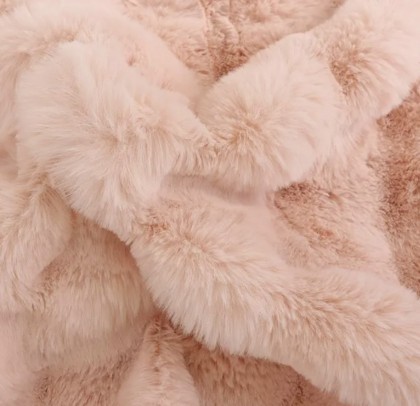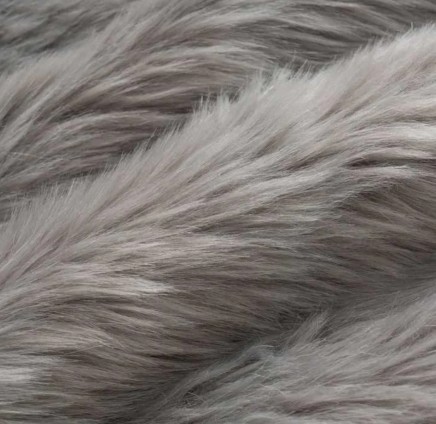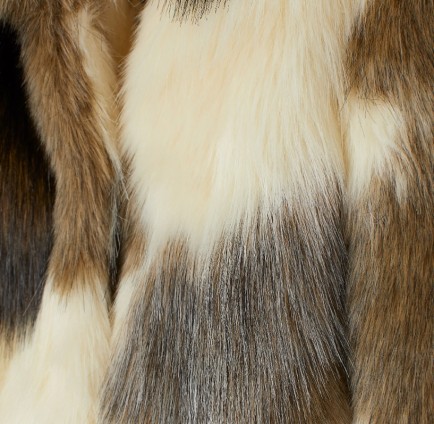There’s a reason sherpa fleece fabric continues to dominate everything from cozy jackets to home accessories. With its plush texture, lightweight construction, and excellent insulating qualities, sherpa fleece has become a go-to material for designers, DIY enthusiasts, and manufacturers alike. Whether you’re curled up on the couch in a fluffy blanket or layering up for a winter hike, sherpa fleece is likely part of the experience.
But what makes this fabric so special? From how it’s made to how to choose the right type—whether you’re sourcing for a retail line or looking to buy sherpa fleece fabric for personal projects—here’s everything worth knowing.
What Is Sherpa Fleece Fabric?
Named after the Sherpa people of Nepal, this synthetic fleece is designed to mimic the look and feel of sheepskin wool. Unlike natural shearling, sherpa fleece is typically made from polyester, acrylic, or a blend of synthetic fibers. The result is a soft, fluffy texture on one side (resembling wool) and a smooth knit backing on the other.
This structure makes fabric sherpa fleece ideal for everything from cozy outerwear linings to full-on jackets and throws.
How Sherpa Fleece Is Made
Sherpa fleece is crafted using a specialized knitting technique that raises the surface of the fabric. After knitting, the raised fibers are brushed and heat-treated to enhance softness and insulation. Some variations—like bonded sherpa fleece fabric—are fused with other layers (e.g., knit or suede) to increase warmth and wind resistance.
| Production Process | Description |
|---|---|
| Yarn Selection | Usually polyester or a polyester-acrylic blend |
| Knitting | Looping fibers to create pile texture |
| Brushing | Raising the fibers for a wool-like appearance |
| Heat Setting | Locks fibers in place and enhances softness |
| Bonding (optional) | Joins Sherpa to another fabric layer |

Key Characteristics of Sherpa Fleece Fabric
Sherpa fleece isn’t just soft—it comes packed with functional features that make it ideal for apparel, upholstery, pet products, and more.
Lightweight yet warm: Traps heat without bulk.
Hypoallergenic: Unlike natural wool, sherpa won’t cause allergic reactions.
Vegan-friendly: Entirely synthetic, suitable for cruelty-free product lines.
Moisture-wicking: Draws sweat away from the body.
Quick-drying: Doesn’t retain water like cotton or wool.
Thanks to these features, sherpa fleece fabric has become especially popular in cold climates and is widely used in casual winter wear and bedding.
Popular Variants and Colors
Sherpa fleece isn’t one-size-fits-all. It comes in a range of colors, finishes, and constructions.
1. Black Sherpa Fleece Fabric
Perfect for jackets, vests, and linings. Its neutral color pairs well with almost any design, offering a sleek and modern look.
2. Brown Sherpa Fleece Fabric
Gives a more rugged or earthy aesthetic. Frequently used in outdoor apparel or rustic home textiles.
3. Bonded Sherpa Fleece Fabric
Constructed by attaching sherpa fleece to another material (often micro-suede, denim, or jersey), creating a two-in-one fabric that adds wind resistance and structural integrity.
4. Double-Sided Sherpa Fleece Fabric
Fluffy and cozy on both sides—no backing. Ideal for throws, baby blankets, and bathrobes where softness on both surfaces is desired.
Sherpa Fleece vs. Other Fleece Types
While often confused with other fleece fabrics like polar fleece, sherpa has its unique advantages.
| Feature | Sherpa Fleece | Polar Fleece |
|---|---|---|
| Texture | Wool-like, fluffy | Smooth, velvety |
| Warmth | Very warm | Warm |
| Thickness | Thicker (esp. bonded) | Thinner, lightweight |
| Appearance | Mimics sheepskin | More uniform look |
| Ideal Use | Linings, blankets, casual wear | Activewear, base layers |
For projects that require both warmth and aesthetics, Sherpa fleece fabric usually wins out.
Where to Use Sherpa Fleece
Thanks to its functional versatility, sherpa fleece has found its way into a wide range of applications:
Winter jackets and coats
Hoodie linings
Furniture upholstery
Car seat covers
Slippers and boot insoles
Pet beds and clothing
Blankets and throws
Baby items like stroller liners and bibs
If you’re looking to create or customize products, sourcing the right version is key—especially when buying sherpa fleece fabric wholesale.

Buying Sherpa Fleece Fabric: What to Consider
Before you click “add to cart,” it’s worth evaluating a few things.
1. Weight and Thickness
Measured in GSM (grams per square meter), heavier fabrics are warmer and more durable. Lightweight options are better for layering.
| GSM Range | Use Case |
|---|---|
| 150–200 GSM | Baby clothes, light throws |
| 250–300 GSM | Apparel linings, moderate warmth |
| 350+ GSM | Heavy jackets, outdoor blankets |
2. Color Options
For fashion pieces, black sherpa fleece fabric remains a top choice, but brown sherpa fleece fabric gives a rugged and natural vibe.
3. Single vs. Double Sided
Double-sided sherpa fleece fabric adds plush comfort all around—perfect for luxury items or reversible products.
4. Wholesale Availability
If you’re producing in bulk, working with Sherpa fleece fabric wholesale suppliers can save significant cost. Be sure to ask for swatches or fabric tests before committing to large orders.
Caring for Sherpa Fleece
Though it’s synthetic, Sherpa fleece needs proper care to retain its softness and appearance.
Cleaning Tips:
Machine wash cold on gentle cycle
Avoid fabric softeners (they flatten the pile)
Tumble dry low or air dry
Do not iron
Use a fabric brush if the pile starts matting
Over time, some shedding may occur—this is normal and doesn’t affect performance.
Environmental Considerations
Because sherpa fleece is usually made from polyester, it’s not biodegradable. However, some eco-conscious manufacturers now offer recycled sherpa fleece made from PET plastic bottles. If sustainability is important to your brand or household, look for certified recycled options or suppliers with transparent environmental policies.
Sourcing and Suppliers
Whether you’re launching a winter fashion line or outfitting your next home project, selecting the right supplier is essential. Look for sellers that:
Offer fabric certification (e.g., OEKO-TEX, GRS)
Provide clear GSM ratings and fabric specs
Accept bulk orders or low minimums
Ship internationally (if needed)
Major textile markets like Guangzhou, Los Angeles, and Istanbul offer excellent sherpa fleece fabric wholesale options both online and through direct trade.
Creative DIY Project Ideas Using Sherpa Fleece
Looking for inspiration? Here are some popular and beginner-friendly projects you can try at home with a few yards of sherpa fleece:
No-sew fleece blanket
Sherpa-lined mittens
Pet hoodie
Quilted baby wrap
Sherpa ear warmers
Throw pillow covers
Reversible poncho with double-sided sherpa fleece fabric
Thanks to its forgiving nature and resistance to fraying, sherpa fleece is great for DIY projects, even if you’re new to sewing.
Soft, stylish, and superbly warm, sherpa fleece fabric is more than just a trend—it’s a timeless material that continues to evolve. Whether you’re seeking bonded sherpa fleece fabric for a rugged coat or a few yards of brown sherpa fleece fabric for your next cozy blanket, there’s a version out there to match every need.
With endless textures, color options, and weight choices, it’s no wonder both fashion designers and casual crafters are turning to sherpa fleece as their material of choice. And if you’re planning to source in bulk, exploring Sherpa fleece fabric wholesale channels can open the door to better pricing and wider variety.
Ready to create? Just pick your color, choose your weight, and let Sherpa’s warmth do the rest.




